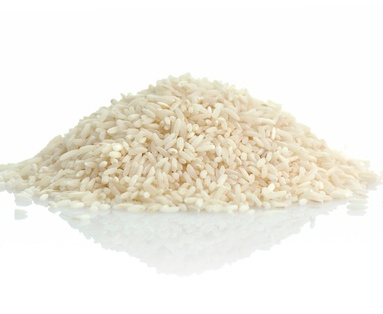
Safety In Mineral Makeup Containing Rice Powder
We have espoused the skin healthy benefits Rice Powder (Oryza Sativa) offers those with sensitive, acne, or rosacea issues when applied to the skin in the form of a face powder or a facial mask. And it continues to be a safe ingredient in our mineral makeup products. The latest news hype has not altered our opinion as to the safety of our rice starch being used in our mineral cosmetics.
Unfortunately for the most part, it has been completely overblown and nondescript in the rice sources mainly affected. Instead the hype proclaims it must be all rice products regardless of growth location and finished, refined ingredient.
We realize that there are many out there, including NGO's (non governmental organizations) and the main stream media piling on, that wish to raise the alarm bells this past year about arsenic being found in commercially grown rice, mainly used in baby food products. Negative agendas sell and hook the public sadly, and of course more confusion and / or hysteria ensues among the populace.
This Does Not Relate To Food Safety
Before we get into specifics, those that keep an eye on food safety, we realize this is vital for keeping us informed as to what we consume on a daily basis. However, we wish to remind those that maybe having a growing concern as it relates to cosmetic products using rice powder, the fact is that something we ingest does not extrapolate same to something applied to the skin.
Noting the difference in food grade and cosmetic grade rice products: Rice syrups, rice bran oil, rice bran, brown rice, etc, are found containing higher trace levels of arsenic due to minimal processing. White rice even in it's solid grain state before continuing onto processing for a refined cosmetic powder, is brown rice milled to remove the husk, bran and germ which contains the trace elements of contaminants, minerals and vitamins.
Rice powder in cosmetics has gone through such extensive processing, once completely modified for the use in cosmetics, the majority of all trace contaminants, not just arsenic, have been removed from the finished powder. Furthermore, our Rice powder is not grown or processed in the U.S. where most of the concern lies, but from a nation in the European Union, where as we all know their regulations against pesticides and trace constituents in ingredients are far more stringent than ours.

Now The Brief Facts About Rice As A Whole
Not wishing to elaborate beyond basic information since Google can provide a whole bevy of articles, typically over-inflated, but we found just a few articles explaining actual scientific research hoping to quell overblown media reporting. Here is a synopsis of the situation.
Arsenic is divided into 2 broad categories: Organic arsenic and inorganic arsenic.
Organic arsenic is essentially harmless and is ubiquitous in our environment. Inorganic is created through use of different pesticides. And higher trace levels of inorganic or organic arsenic, depending on where it is grown, are found in brown rice rather than in white rice since white rice is essentially brown rice, stripped.
The FDA has weighed in on rice food products and has done testing, and the European Food Safety Authority, the United Nations Codex Alimentarious Commission and China’s Food Safety Commission are trying to establish limits for inorganic arsenic in foods, including rice. China has a maximum level for total arsenic in rice of 0.4 microgram per kilogram. Note this is addressing foodstuffs!
Plants accumulate organic arsenic because it protects them from harmful micro-organisms, especially fungi. Rice isn’t unique in this.
“All plants pick up arsenic,” states John M. Duxbury, PhD, a professor of soil science and international agriculture at Cornell University in Ithaca, N.Y. “Concentrations in leaves of plants are much higher than in grains of plants. Thus, leafy vegetables can contain higher levels of arsenic than rice, especially when they are grown on arsenic-contaminated soils."
So the statement of fact is: although they are measuring arsenic levels in food products reflected in these statements, the reminder is, ingestion is not the same as topical application in any context. This is especially true when our skin acts like a barrier, making it practically impermeable to things in our environment. Plus through critical thinking we must acknowledge all food, including our healthy, leafy greens contain some measure of this contaminant making consumption literally impossible to avoid. Yet, the many proven health benefits we get from consuming fruits and vegetables watered and grown in any soil can far outweigh trace amounts of any contaminant found within the plant itself.
Continue to use and enjoy the benefits your mineral makeup products containing rice powder provide with confidence. We certainly do!
